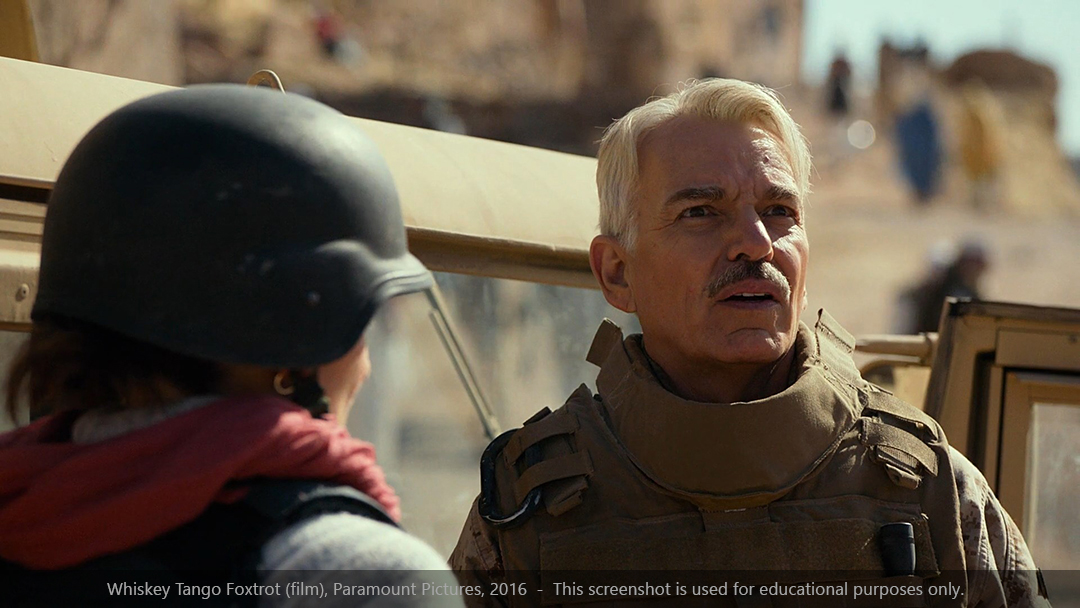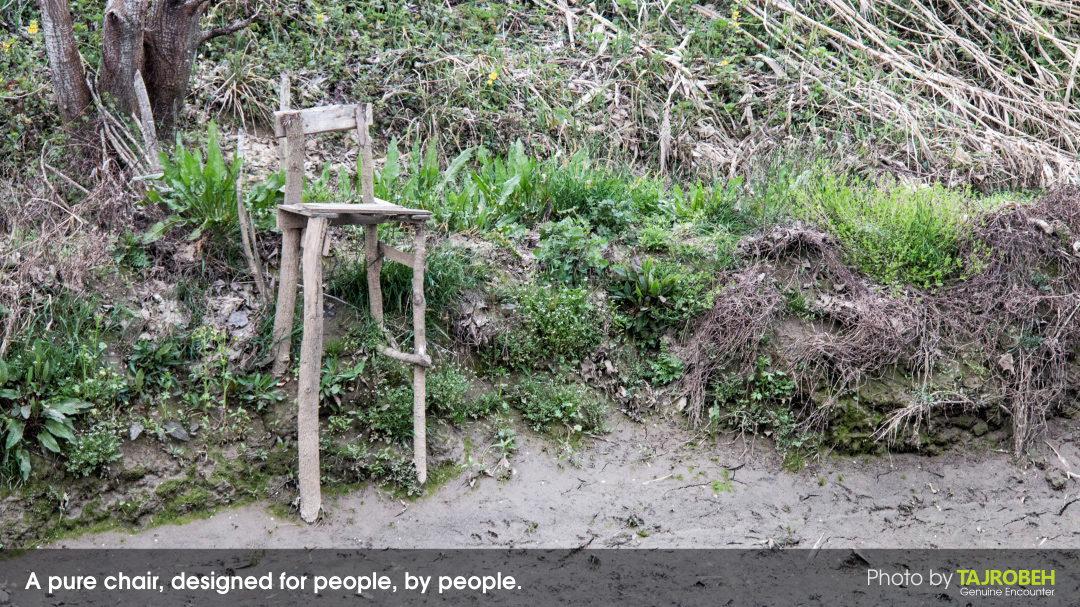19 Aug 2018
By Tajrobeh Design Studio
In this round, one of the women of the village, takes the reporter with herself to her home, where the reporter encounters a number of other women.
In the next scene, we see the reporter asking the commander Not to repair the well again. She explains to him that it's not the Taliban who blow up the well. The women of the village blow it up, using mines that were remained from Russia War era. The reason is that their only chance to hang out and chit chat, is during the time they go to the river to bring water to their homes. The well was an obstacle to their socializing opportunity.
It's really insightful to see the commander's enlightened mind, shining through his amazed face, in this moment.

This story is a parable for the typical design processes, that aim "to do a favor" for the users, regardless of what they might really need or desire. A type of design in which the defining factor for decision making is the mind-set of the designer (commander, in this case), not the real life.
"Designing" is different than just "Having an opinion or Idea" about something.
When a designer encounters a problem, she or he shouldn't consider her or his
perceptions and ideas as the final design. A very widespread misunderstanding
among junior (and even some senior!) designers.
Too many different kinds of logical, emotional and intuitive inputs should be
mixed and synthesized by designer to create a solid and reliable fundamental for
defining the problem and refining the solutions. Inputs like: Social mood, usage
context, users' physical and mental state, ergonomic and technical criteria,
economy, environment, current users' experience, users' untold desires and
insights, desired user experience & ....
You can see too many "clean" and "polished" presentations about "sophisticated" design projects in conferences and seminars that aim to present the designer's skills. You can even watch too many creative and skillfully-crafted advertising campaigns that are more likely to represent the advertising team and their ability to produce "well-crafted productions", rather than presenting the products or services of the main brand which have paid for the advertising program. Some designers present their designs to prove their abilities to other designers. We may call it "Designer-centered Designs".
Whereas the expected role and responsibility of a designer is to help solve the real problems of life and business. Designers must give a hand to life, instead of using people's problems as a platform to show off their skills, abilities and ego.
Professional and genuine designers focus on humanity and life, even when they implement their personal ideas and opinions in the design process.
The designers who are "Self-Centered" instead of "People-Centered"
There are 3 main reasons for this problematic approach:
1- The first reason is the evaluation methods in academic design education. In
design colleges, in most cases, the designs and students get the high scores if
they can satisfy their teacher, not the intended users of their designs. The
designs get presented for the isolated context of the college, for a specific
kind of audience (teachers and classmates) that are designers themselves, not
for real users in real context.
The students want to become successful among their peers (designers) and this
approach becomes a habit that sticks with them even when they enter the
professional design market. Their designs are still meant to satisfy other
designers (that are not classmates anymore, but colleagues), rather than real
users.
2- The second reason can be that these designers don't enjoy the design itself,
but the fame and credit. In fact, they don't enjoy "designing", but "being a
designer".
Social status, fame and income, not being understood properly, can derail the
designer's focus from the wholehearted and internal motivations to external and
superficial goals.
A part of the reason for this miscalculation can also be found in educational
contexts. Most of the design portfolios, in index books, web sites or video
presentations, present the final outcome of the design project. We see final
product with a great and retouched photography in a very beautiful context. A
presentation that make us feel perfect about them. But the missing part is the
design "process". A difficult and complicated path that makes even the most
experienced designers cry! This process is usually full of ambiguity,
challenges, trials and errors which engages with too many aspects like: the
client's goals, users' needs, economic and technical terms & ...
That's the reason some (too many) designers consciously or sub- consciously have
a tendency to ignore or shorten the process by considering their "ideas", "thoughts" and
"opinions" as the final design solution.
3- The third reason can be doing design projects without a real client. In too many design projects, the client is the designer her or himself. In this case, the project is much easier when we have to deal with a real client that has real-world requests. Though this kind of projects can be helpful or even satisfactory sometimes, but doing too much of these clientless projects can form a habit of "Designing for Designers".
Why focus on "people" when we design?
First of all, when we focus on the people whom get affected by our designs, we have to go through more complex and unpredictable roads, so our final solutions will have more essence of life. They'll create more believable and alive experiences. We'll be able to create a long-lasting and sustainable outcome that is not just a surface, but has a genuine and life-friendly impact.
"Design being favorite" is more important than "Designer being famous". It's more sustainable and valuable.
And getting to that point requires designers not only to enter the untold and unseen corners of people's life, but to experience life in its full capacity and opportunities through interacting with people and life adventures. Designers should get mixed with people, not to make themselves an "elite and special species" the stands apart from the rest of the society.
Secondly, a very attractive part of the design profession is to interact and
learn from other fields. This multidisciplinary approach makes Design one of the
most exciting and non-boring professions of all in the world.
The opportunity of encountering new subjects and fields, interacting with
different kind of people in every project and learning new materials, all can
lead to a more complex and dense experience of life for designers. The kind of
experiences that makes us not just better designers, but better human beings.
Not to mention that these mental and emotional inputs and experiences in each
project will help us make better decisions and generate more sophisticated ideas
through other design projects.
Thirdly, the "People-Oriented Design" approach can give us the motivation and opportunity to involve the target audience in the design process. Participatory Design approach will give the design outcome more "Social Influence Power" and through that, will create more sustainable and long-lasting impacts.
When you give people the opportunity to participate in the design process and give their ideas, they'll feel a sense of belonging to the final result and therefore the social acceptance rate of the design field will increase. It would be so delightful to see that the society is the advocate of Design.

At the end, by focusing on the people, we can have "Multi-layered and more
complex mental and emotional inputs for ourselves as designers" and create "more
influential and more inclusive outcomes and experiences for people".
![]()
about design, art and life.